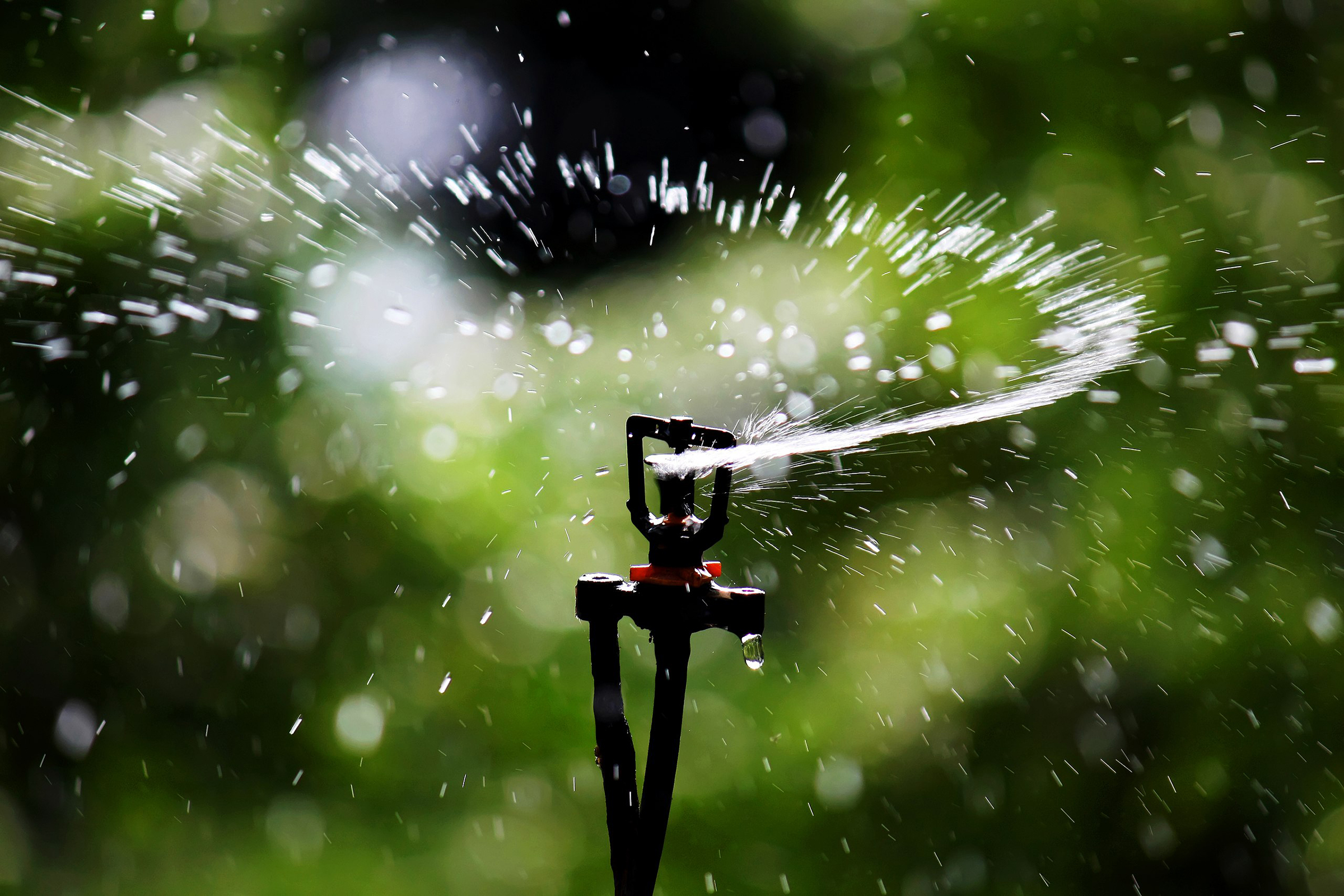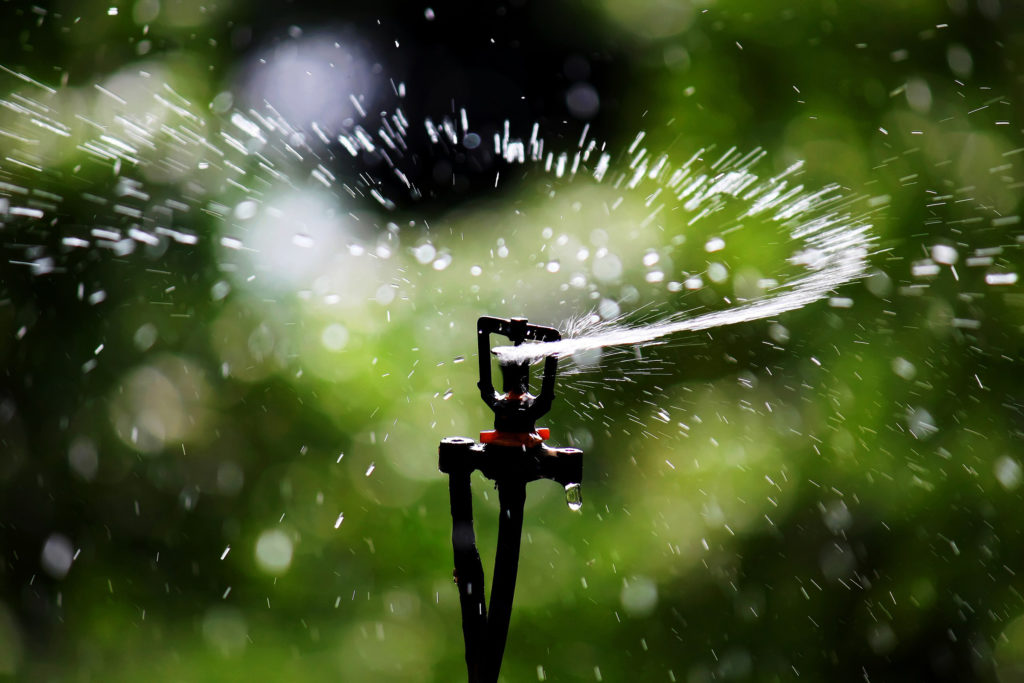

Based on numerous historical studies and predictive climate modeling, climate scientists predict that the future of the American West, and California in particular, will be one of higher daily average temperatures, more heat waves, longer and more frequent droughts, poorer water quality and more forest fires1.
California receives most of its water from precipitation—rain and snowfall. A small amount of water is imported from the Colorado River and from Oregon. At this time, a minimal amount of water comes from desalination (extraction of fresh water from seawater).
Much of the annual precipitation from rain and snow is stored as surface water in reservoirs. Some of the precipitation is stored as groundwater.
The Sierra Nevada snowpack used to serve as a natural reservoir of water. It would release water into streams, rivers and lakes gradually over the year as the snowpack melted. With increased global warming and longer droughts due to the climate crisis, there has been a decrease in the Sierra Nevada snowpack17. As a result, less water is held for later snowmelt release.
We are amid a severe drought that began in early 20202. Extreme dry and hot conditions that used to be rare are now occurring more frequently1.
The current drought is one of the most severe, hot and dry periods in history. Water Year 2021 (Oct. 1, 2020–Sept. 30, 2021) was California’s second driest year based on statewide precipitation since records have been kept. (Water Year 1924 was California’s driest year1.)
Water Year 2022 is continuing the trend of minimal precipitation. From January through April 2022, precipitation in California was the lowest on record dating back to 18953.
Paradoxically, in the face of this mega drought crisis, Fresno County’s annual water conservation report said that the county had an adequate supply of groundwater to meet current needs4. As in past years, on April 1, the City of Fresno resumed a three days a week water schedule5.
Rather than increasing watering days as Fresno has done during the current drought, other cities in California and the West have decreased lawn watering days. Some cities such as Las Vegas, Nev., no longer allow their residents to water their ornamental lawns6.
The Metropolitan Water District provides water to large areas of Southern California, from Ventura County to northwestern Los Angeles County, to parts of the Inland Empire. Starting June 1, the Metropolitan Water District in Southern California has limited outdoor watering to once a week7.
The City of Fresno gets its potable water from both groundwater and surface water (lakes, rivers, streams from annual precipitation)8. The following water sources are used to supply Fresno with its water:
- Groundwater from the aquifer that lies under the San Joaquin Valley
- Surface water from the Kings River under the auspices of the Fresno Irrigation District
- Surface water from the San Joaquin River under the auspices of the U.S. Bureau of Reclamation using the Friant Division from the San Joaquin River of the Central Valley Project
- Recycled water supply from the Fresno-Clovis Regional Wastewater Reclamation Facility (RWRF) and North Fresno Wastewater Reclamation Facility
Fresno blends water from both groundwater and surface water sources depending on what is available to send to its residents. Per the city’s Public Utilities Department (PUD), most of Fresno’s potable drinking water comes from “approximately 260 water wells” scattered throughout Fresno supplemented by surface water8.
Although a few users have access to Fresno’s non-potable recycled water, the majority of users currently use potable water not only for drinking and cooking but also for bathing, laundry, lawn watering and farm irrigation.
The greater Fresno area has a large amount of wastewater. Per Fresno’s PUD, “Almost all wastewater generated from homes and businesses in the Fresno metropolitan area” is treated at the Fresno-Clovis RWRF located at Jensen and Cornelia avenues, southwest of the city of Fresno9.
Wastewater management involves recycling that wastewater at the Fresno-Clovis RWRF, which is staffed 24 hours a day. After treatment, the treated wastewater is either discharged to the San Joaquin River or “recycled” for use as non-potable water. (The amount and percentage of wastewater that is recycled for further use is not known to the author.)
Recycling wastewater reduces the need to use drinking water for non-potable uses. While recycled water is considered safe, it is not intended for drinking10. It has not been treated to the level required to make it safe for drinking on a long-term, regular basis.
“Recycled water” is classified as non-potable tertiary disinfected water. Recycled water can be used for non-potable purposes such as car washes, toilet flushing, commercial laundries and cooling towers. Recycled water can also be used for irrigation of landscape, agriculture, parks, school grounds, golf courses and other open spaces.
Currently, Fresno’s tertiary disinfected recycled water distribution system utilizes a separate purple pipe. In addition, the recycled water is sent to 1,700 acres of ponds to percolate into the ground to ultimately replenish the aquifer, which is where the majority of Fresno’s drinking water still comes from.
The current and future demand for groundwater and surface water will continue to exceed the supply of water California receives in the form of rain and snowfall from nature11. Californians can only decrease demand; they cannot increase the supply of water from nature. The increasing demand for water comes from the increasing California population, agribusiness and the need to maintain the Sacramento delta ecosystems.
California reservoirs are at historic low levels12. The California dam infrastructure is old and needs upgrading13. Some dams need to be removed. Yet, building new dams will not increase the actual water supply or decrease the demand for water.
Dams help to manage water demand but do not increase the amount of water available. California currently has about 1,500 dams. Almost every tributary that could be easily blocked has been dammed. The only ones that have not been dammed are either unapproachable or extremely expensive to build.
Over the past 100 years, agribusiness has been draining the groundwater aquifer for irrigation purposes and the amount taken out has not been replaced. It took 10,000–20,000 years for the aquifer to reach its highest levels14. Now, due to the falling level of the aquifer, the Valley floor is sinking.
Seawater desalination will not be able to provide adequate amounts of potable water to replace the water deficit facing California15. As of August 2021, California had 12 seawater desalination facilities in operation, with proposals for 15 more.
Desalination has significant economic and environmental costs. It is a complicated, expensive and energy-intensive process. If fossil fuel is used as the energy source, it will contribute to global warming and climate change.
After the desalination process is done, disposal of the resulting brine is a significant problem due to brine’s toxicity to fish and other marine life.
California continues to suffer from severe drought and increasing temperatures. The only way to get through this is for all parties to decrease their demand and use of water.
Fresno County residents will have to decrease their demand for water. The choice residents need to make is do they want a green lawn now or drinking water in the future. The decision should be easy. Continue to water your trees to capture carbon dioxide and create shade, but stop watering the lawn.
*****
References
- https://water.ca.gov/-/media/DWR-Website/Web-Pages/Water-Basics/Drought/Files/Publications-And-Reports/091521-Water-Year-2021-broch_v2.pdf
- https://calmatters.org/environment/2022/02/california-drought- record-january-february/. Feb. 16, 2022, article in CalMatters on the California drought.
- www.ncei.noaa.gov/access/monitoring/us-maps/ytd/202204. January–April 2022 precipitation in California was the lowest on record dating back to 1895.
- www.co.fresno.ca.us/home/showpublisheddocument/58173/637647050590370000. The 2021–2022 Annual Conservation Report to the Fresno County Board of Supervisors shows for the most part the current groundwater capacity is adequate to meet current demands.
- www.fresno.gov/publicutilities/water-conservation-program/water-schedules/
- www.nytimes.com/2022/05/03/climate/las-vegas-lawn-grass-ban.html
- www.washingtonpost.com/climate-environment/2022/06/01/drought-california-water-restriction/
- www.fresno.gov/publicutilities/water-quality-operations-testing/water-source-distribution/
- www.fresno.gov/publicutilities/sewer-wastewater/
- www.fresno.gov/publicutilities/sewer-wastewater/recycled-water/
- www.ppic.org/publication/groundwater-in-california/#:~:text=Groundwater%20is%20a%20vital%20component, portion%20of%20their%20water%20supply. May 2017 article by the Public Policy Institute of California on California’s unsustainable use of groundwater.
- www.latimes.com/california/story/2022-05-09/drought-california-oroville-shasta-reservoirs-critically-low
- www.ppic.org/publication/dams-in-california/
- https://revealnews.org/article/9-sobering-facts-about-californias-groundwater-problem/
- www.apmresearchlab.org/10x-desalination
- www.latimes.com/projects/california-farms-water-wells-drought/
- https://earthobservatory.nasa.gov/world-of-change/SierraNevada
